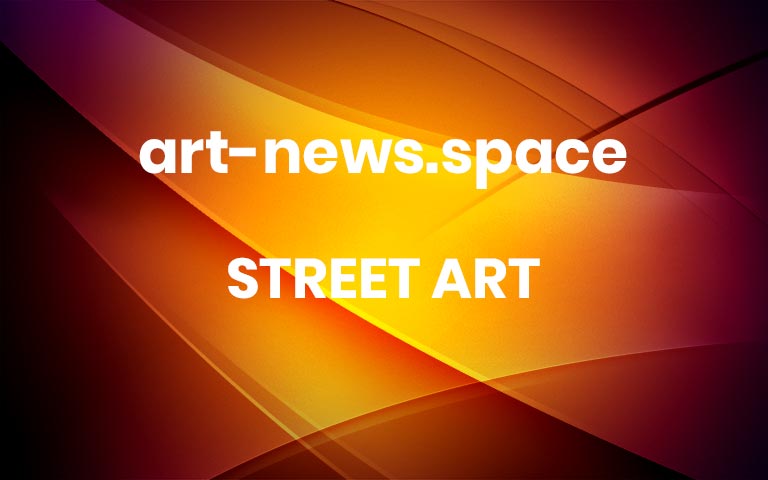Los Angeles’s burgeoning gallery scene is offering an embarrassment of riches during Frieze Week, with a rash of openings timed for the fair’s opening day. Here’s our list of must-see gallery shows to check out while you’re in town.
“Will Gabaldón: This Must Be the Place” at Various Small FiresOpening February 15
Will Gabaldón, 48 Landscape (2021). Photo courtesy of Various Small Fires, Los Angeles.
For his first show with Various Small Fires, Chicago artist Will Gabaldón has made a series of oil-on-panel landscape paintings of scenes rendered from memory—or even imagined. The exhibition’s title comes from the 1983 Talking Heads song “This Must Be the Place (Naive Melody),” here suggesting a place that can only be encountered through art.
Various Small Fires is located at 812 North Highland Avenue, Los Angeles.
“The Rose Garden: Enrique Martinez Celaya” at UTA Artist SpaceFebruary 16–March 12, 2022
Enrique Martínez Celaya, The Laughter (2022). Photo courtesy of UTA Artist Space, Beverly Hills.
Enrique Martínez Celaya delves into our collective memories of crisis and chaos in an exhibition inspired by T.S. Eliot’s Four Quartets. Words from the writer’s poems are written on the floor of the gallery, which hosts large-scale paintings and sculptures meant to represent both our world and our inner selves. The artist also has solo shows at the at the University of Southern California’s Doheny Memorial Library (February 22–April 9) and the Fisher Museum of Art (through April 9.)
UTA Artist Space is located at 403 Foothill Road, Beverly Hills, California.
“Raqib Shaw” at Dries Van NotenFebruary 16–March 26, 2022
Raqib Shaw, High on Hope (2021). Courtesy of Dries Van Noten, Jeffrey Deitch, and White Cube.
Dries van Noten is teaming up with Jeffrey Deitch and White Cube on a solo show of work by Raqib Shaw. His astonishingly detailed paintings are drawn from childhood memories of his mother’s garden in Kashmir, reimagined here in fantastical scenes where nature and the city collide.
Dries Van Noten is located at the Little House, 451 N. La Cienega Boulevard, Los Angeles.
“Momentary Pause” at Casa Perfect February 17–March 18, 2022
Chen Chen and Kai Williams, Stone Rose Table Lamp (2022). Photo courtesy of Casa Perfect.
Contemporary design, craft, art, `and technology come together in this group show about change and self-discovery organized by Future Perfect. Featured artists include Piet Hein Eek, John Hogan, Cody Hoyt, and Bradley L. Bowers.
Casa Perfect Los Angeles is at 1650 Carla Ridge, Beverly Hills.
“Anne Truitt: White Paintings” at Matthew Marks GalleryFebruary 17–April 2, 2022
Anne Truitt, Arundel XLIII (1977). Photo courtesy of Matthew Marks Gallery, Los Angeles.
This is the first show of Anne Truitt’s “Arundel” series since their debut at the Baltimore Museum of Art in 1975. There, one critic reportedly called for the government to cut the institution’s public funding in response to the spartan works, which feature a uniform white background, a handful of graphite lines, and a few titanium white brushstrokes.
Matthew Marks is located at 1062 North Orange Grove, Los Angeles.
“Phyllida Barlow: Glimpse” at Hauser and WirthFebruary 17–May 8, 2022
Phyllida Barlow, Undercover 2 (2020). Photo by Furukawa Yuya, courtesy the artist and Mori Art Museum, Tokyo.
For her first L.A. solo show, Phyllida Barlow worked on site at the late-19th- and early-20th-century industrial buildings that house the gallery to create new large-scale works that are tall enough for viewers to walk under.Hauser and Wirth is located at 901 East 3rd Street, Los Angeles.
“Womanhouse” at Los Angeles Nomadic DivisionFebruary 18–April 2, 2022
Karen LeCoq and Nancy Youdelman, Leah’s Room in the original “Womanhouse.” Photo courtesy of Los Angeles Nomadic Division.
It has been 50 years since Judy Chicago and Miriam Shapiro organized “Womanhouse,” an all-female art show about the home at an abandoned East Hollywood mansion, featuring the work of students from the CalArts Feminist Art Program in Los Angeles. LAND is partnering with Anat Ebgi Gallery on a new exhibition exploring the spirit of experimentation and collaboration that fueled the project and West Coast Feminist art in the first half of the ’70s, with work from the period and ephemera and photographs from the original “Womanhouse.”
“Womanhouse” will be on view at 4859 Fountain Avenue, Los Angeles.
“Luncheon on the Grass” at Jeffrey DeitchFebruary 19–April 23, 2022
Cecily Brown, Luncheon on the Grass (2021–22). Photo by Genevieve Hanson, courtesy of the artist.
Taking a page from art history 101, Jeffrey Deitch presents a group show of over 30 contemporary artists reimagining Édouard Manet’s Le Déjeuner sur l’herbe (1863), considered by many to be the first Modern paining. Following in the footsteps of luminaries from Claude Monet to Pablo Picasso are new works by the likes of Nina Chanel Abney, Karen Kilimnik, Naudline Pierre, Christina Quarles, Walter Robinson, and Salman Toor, as well as a 1979 Robert Colescott.
Jeffrey Deitch is located at 925 N. Orange Drive, Los Angeles.
“Leilah Babirye: Ebika Bya ba Kuchu mu Uganda (Kuchu Clans of Buganda)” at Gordon Robichaux February 20–April 3, 2022
Leilah Babirye, Abambowa (Royal Guard Who Protects the King), 2020. Photo courtesy of Gordon Robichaux, Los Angeles.
In her wood and ceramic sculptures, Ugandan artist Leilah Babirye imagines an alternate queer history for the Bugandan clan system that still shapes the culture of the city of Kampala. These kuchu statues take their name from a code word used among the region’s trans community, elevating trash and other found materials to create totems that celebrate a group threatened under Ugandan law. Babirye herself sought asylum in the U.S. due to the anti-gay discrimination and criminalization she faced at home.
Gordon Robichaux is located at 1464 West Temple Street, Los Angeles.
“Noelia Towers: Opening an Umbrella Indoors” at De BoerThrough February 26, 2022
Noelia Towers, Remember Me. Courtesy of De Boer.
Chicago painter Noelia Towers was born in Barcelona, where, according to family lore, she was cursed from infancy when her parents refused to give a Romani woman money on the day of the artist’s baptism. She likens that bad luck to that of opening an umbrella indoors, the title of the show and the subject one of the exhibition’s works, painted in photorealistic style based on photos Towers took of herself.
De Boers is located at 3311 E. Pico Boulevard, Los Angeles.
“Rachel Harrison: Caution Kneeling Bus” at Regen ProjectsThrough February 26, 2022
“Rachel Harrison: Caution Kneeling Bus” at Regen Projects, Los Angeles, installation view. Photo courtesy of Regen Projects, Los Angeles.
Catch new works from Rachel Harrison, who uses readymade objects to make handmade, abstract sculptures. She’s also debuting paintings based on photos taken with the smartphone app Scanner Pro. Harrison sparingly paints atop partially distorted landscapes featuring glitches generated by the app’s algorithm.
Regen Projects is on view at 6750 Santa Monica Boulevard, Los Angeles.
“Jonas Wood: Plants and Animals” at David Kordansky GalleryThrough March 5, 2022
Jonas Wood, BBall Studio (2021). Photo by Marten Elder, courtesy of the artist and David Kordansky Gallery, Los Angeles.
Made over the last three years, the colorful, highly detailed paintings in Jonas Wood’s new show started out as photographs, drawings, and collages before reaching their final form in oil and acrylic canvases. These scenes of interior spaces and the natural world seemingly come to life in their vibrancy.
David Kordansky Gallery is located at 5130 W. Edgewood Place, Los Angeles.
“I Do My Own Stunts” at Spazio AmanitaThrough March 7, 2022
Mickey Lee, Wanton Fields (2022). Courtesy of Spazio Amanita.
Spazio Amanita has brought together a buzzy list of woman painters—Cristina de Miguel, Mickey Lee, Ruby Neri, and Karyn Lyons, among others—for this group show celebrating the physicality of art-making. Unlike massive workshops, these artists “do their own stunts,” so to speak, allowing the voice of the woman creator to retain its power.
Spazio Amanita is located at 1015 Cahuenga Boulevardd, Hollywood.
“Tori Wrånes: Mussel Tears” at Shulamit Nazarian Through March 12, 2022
Tori Wrånes, ECHO FACE, VEGA|ARTS Vega Scene Copenhagen. Photo by Frida Gregersen, courtesy the artist and Shulamit Nazarian, Los Angeles.
Combining elements of performance, sound, painting, and sculpture, multi-disciplinary artist Tori Wrånes mines her birthplace, the fishing town of Kristiansand, Norway, for inspiration for her own fantastical world. A soundtrack of foghorn sounds periodically in the galleries, while sculptures borrow the form of oblong mussels shells a vital, if threatened part of the local ecosystem that helps filter the coastal waters.
Shulamit Nazarian is located att 612 N. LaBrea Ave, Fairfax, Los Angeles.
“Olafur Eliasson: Your Light Spectrum and Presence” at Tanya Bonakdar Gallery Through April 2, 2022
“Olafur Eliasson: Your Light Spectrum and Presence” at Tanya Bonakdar Gallery, installation view. Photo courtesy of Tanya Bonakdar Gallery, Los Angeles.
Olafur Eliasson’s long-term fascination with visible light can be seen—no pun intended—in this exhibition of 11 circular paintings from his “color experiment” series, dating from 2012 to 2021. Created in consultation with a color chemist, the paintings attempt to match an exact tone of paint to each nanometer of light in the spectrum.
Tanya Bonakdar Gallery is located at 1010 N. Highland Avenue, Los Angeles.
“Digital Combines” at Honor FraserThrough April 2, 2022
Daniel Temkin, Right-Triangular Dither 15% Teal. Photo courtesy of Honor Fraser, Los Angeles.
The 20th century had Robert Rauschenberg and his combines. Now, the age of NFTs brings us “Digital Combines” at Honor Fraser, a potential new genre proposed by artist Claudia Hart that allows physical paintings and a related digital file with relevant metadata to become one single conceptual object. The group show features Nancy Baker Cahill, Jakob Dwight, Claudia Hart, Tim Kent, Gretta Louw, LoVid, Sara Ludy, Daniel Temkin, and Saya Woolfalk, with contributing scholar Charlotte Kent.
Honor Fraser is located at 2622 S. La Cienega Boulevard, Los Angeles, California.
Follow Artnet News on Facebook: Want to stay ahead of the art world? Subscribe to our newsletter to get the breaking news, eye-opening interviews, and incisive critical takes that drive the conversation forward. More



